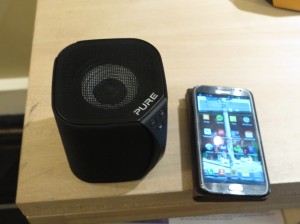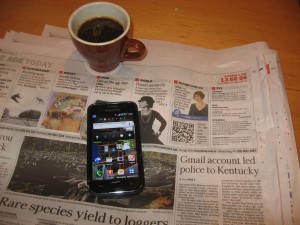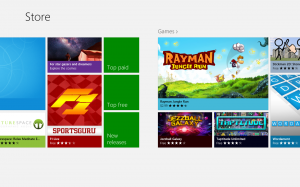CableLabs have given their blessing for DLNA CVP-2 standards for premium-content delivery in the home
Article – From the horse’s mouth
CableLabs
DLNA CVP-2: Premium Content to Any Device in Any Room
My Comments
CableLabs have cemented their approval for the current iteration for DLNA Commercial Video Profile 2 to provide for improved in-home pay-TV setups using the home network. This leads effectively to an FCC goal that requires device-independence for cable-TV setups in the home rather than users being required to lease a set-top box for each TV in the home or install a “TV Everywhere” app provided by the cable company on each mobile device if they want cable TV on the extra screens.
What is DLNA CVP-2?
This is a super-standard defined by DLNA which uses a group of standards to assure pay-TV networks that their content is being delivered securely and surely to the display device via the home network. Here, the display device can be a Smart TV or video peripheral with “Connected TV” capabilities or software in a regular desktop / laptop computer or mobile device (tablet / smartphone) to show the TV content on the screen.
It will typically require a so-called “gateway device” connected to the cable system, satellite dish and/or Internet service, such as a broadcast-LAN tuner, router with broadcast-LAN capabilities or a PVR in the customer’s home while display devices and software would have to authenticate over the home network with the standards that are part of the package. The PVR solution may typically be connected to the main TV set in the lounge or family room where most TV viewing is done while TVs installed in other rooms like the bedroom can use the home network to “pull down” live or recorded TV content using “smart-TV” abilities integrated in the set or a games console / Blu-ray player.
There is the use of DTCP-IP secure-content-delivery specifications for IP-based home networks to authenticate the access of content to cable-TV / content-studio / sports-league requirements. As well setups that implement DLNA CVP-2 implement RVU which provides the same kind of user interface expected when you use pay-TV services, which could facilitate things like access to video-on-demand and pay-per-view content, access to the service provider’s TV-hosted storefront and magazine, or ability to schedule PVR recordings.
Another benefit provided by DLNA CVP-2 is to support endpoints that implement a very-low-power standby mode and allow them to use wakeup and network-reservation mechanisms to allow the efficient-power modes to operate but provide for proper useability and serviceablility. This avoids service issues that are likely to happen if a device goes to an ultra-low-power quiescent mode when not needed and finds that it has to create a brand new connection to the network and its peers when it is needed.
Do I see this as a change for delivery of the multichannel pay-TV service?
One reality is that DLNA CVP-2, like other technologies affecting TV, won’t change the calibre of the content offered on pay-TV services. You will still end up with the same standard of content i.e. a lot of channels with nothing worth viewing.
But it will affect how a pay-TV company delivers services pitched towards a multiple-TV household. They could offer, either as part of the standard service, as part of an upsaleable premium service or as an optional item, a “multiple-TV” service. This would allow a person to have the pay-TV service appear on all suitably-equipped screens instead of paying for each TV to be equipped with a set-top box.
Similarly, the main device could change from an ordinary set-top box with PVR abilities to either one with the “gateway” abilities integrated in to it or a “headless” gateway device with broadcast-LAN and PVR abilities. In this case, the main TV would either be a suitably-equipped Smart TV or be connected to a video peripheral that has this kind of “connected TV” functionality built in. It could also change the focus of the value of the customer’s bill towards the content services rather than the customer-premises equipment.
For consumers, it could be a path for those of us who move between pay-TV or triple-play services whether due to moving location or moving to a better offer. This is because there isn’t the need to mess around with set-top boxes or create infrastructure for a pay-TV service that implements different methodologies.








